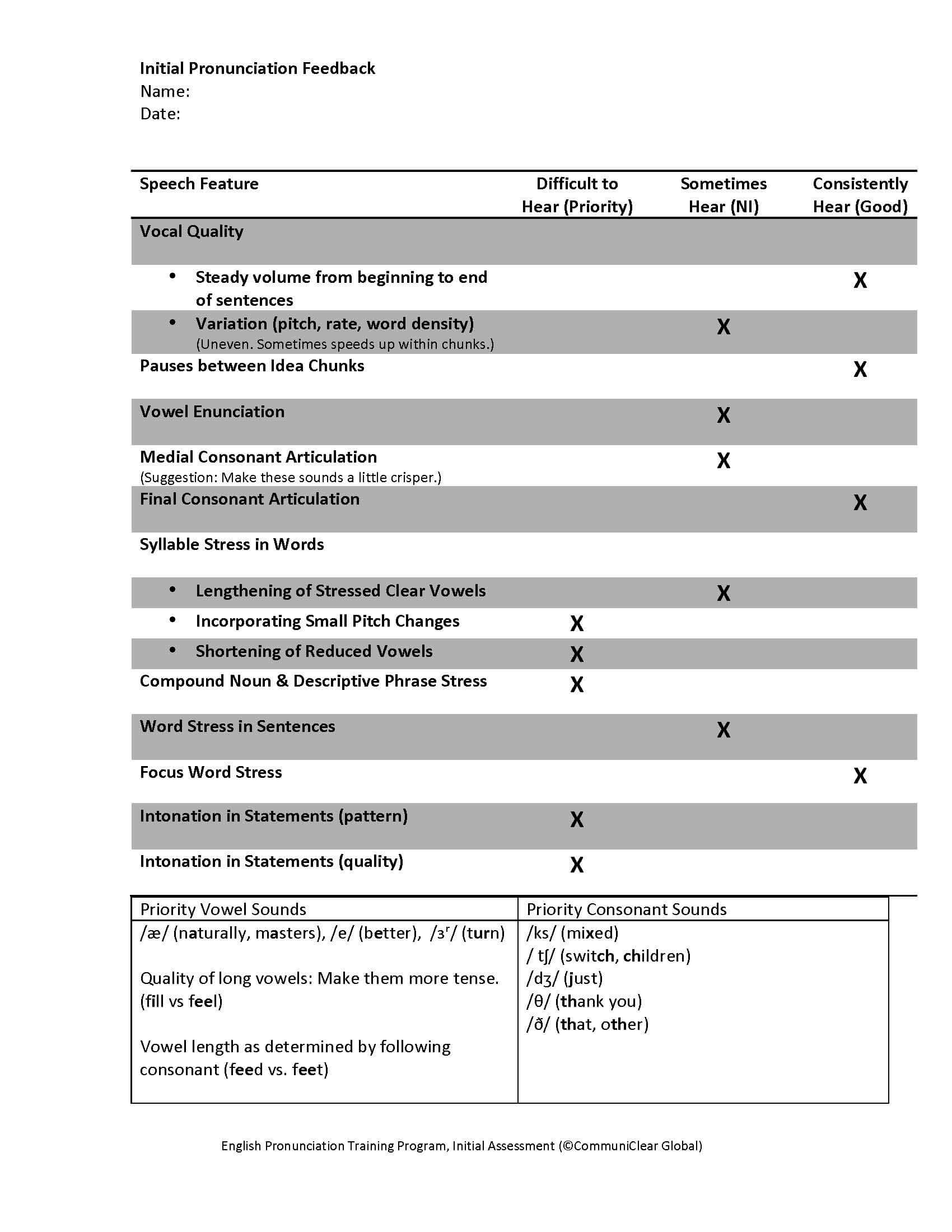
If you are wanting to improve your global English speaking skills, having a specific roadmap makes the most sense. This helps with not only training direction but also with the measurement of improvement.
People ask me, If I work with you or sign up for one of your programs, what will the concrete outcome be? What percentage of improvement should I expect? 50%? 80%? 100%
Good question!
Let’s Talk Factors
- The training participant’s “musical” ear.
- How much exposure the participant has to spoken English. Daily and all day? Daily but only during select meeting times? Once or twice per week?
- The participant’s past experience in working with English pronunciation.
- The training participant’s commitment to the program.
Again, A Pronunciation Roadmap Is A Good Place To Start
Let me explain a little how I work. At the beginning of any new program, I receive two speech samples from each training participant. I then grab one sheet of paper, otherwise known as an initial assessment. This structures how I listen to a very multi-layered system. Namely, the English sound system.
I concentrate on the
- Individual sounds (consonants and vowels),
- Rhythm (at the word, phrase, and sentence levels), and
- Vocal presence (volume, timbre, and tone)
The idea is to dig deep and identify what might help the speaker to deliver his or her message with more clarity. What might help the listener to more easily process the information and in the end, retain more of the information.
The identified priorities inform the collaborative effort of the speaker(s)-in-training and I each step of the way toward that minimal 80-85% guarantee.
Take a look at the sample assessment below:

Specifics Drive Performance Improvement
Looking at the sample initial assessment above, our goal is to move all of the Xs out of the Difficult to Hear (Priority) column and into the Sometimes Hear (Needs Improvement) or Consistently Hear (Good) columns. 80-85% of the Xs in the Priority and Needs Improvement columns should reach the Good column.
What this means is that of the 10 Xs in the Priority & Needs Improvement columns, 8 should reach Good, and the remaining 2 Needs Improvement.
Want to Talk?
Would you like to improve your spoken English and talk with me, Sarah, about the next steps?
Are you an HR specialist or team leader who would like to talk a little more about getting communication training support for an individual or group of employees?
I’m here to help. Simply fill out the form below to start the conversation.


